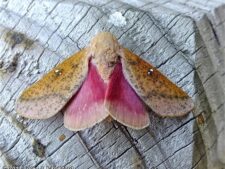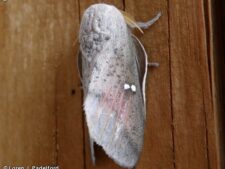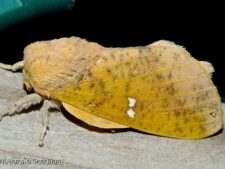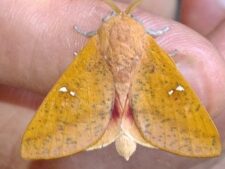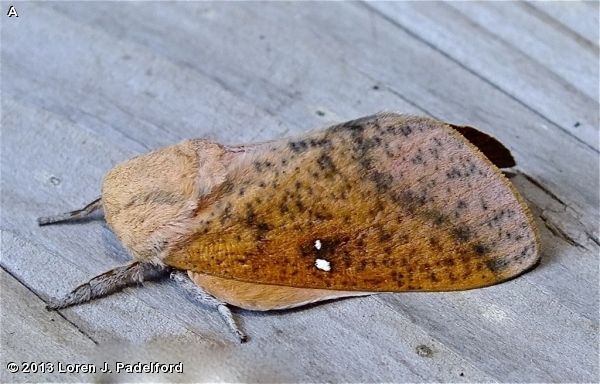
This moth has a wingspan of 1.75 to 2.50 inches. Females are larger than males. The forewing is gray with black speckling and varying amounts of rose shading. The white reniform spot may be double, single or absent. The hindwing is pale gray with rose at base. The thorax and abdomen are covered with dense pearl gray hairs. The caterpillar is green with a reddish and white stripe on the sides. The second and third thoracic segments have 2 pairs of reddish horns. There are 4 pairs of elongated reddish abdominal horns.
The Honey Locust Moth is probably fairly common in our area. Adults can be seen from May to September. The brown moth shown here was photographed in mid-August at Fontenelle Forest Nature Center. The gray form individual was photographed at Fontenelle Nature Center in late May.
The scientific name of the Honey Locust Moth was formerly Sphingicampa bicolor. The larval food plants are Honey Locust and Kentucky Coffee-tree. There are 3 generations with mature caterpillars from May until fall. The midsummer generations mature in as little as 3 weeks. The larvae pupate in the ground and overwinter as pupae.
Disclaimer: The content of NatureSearch is provided by dedicated volunteer Naturalists of Fontenelle Forest who strive to provide the most accurate information available. Contributors of the images retain their copyrights. The point of contact for this page is: Loren Padelford.

